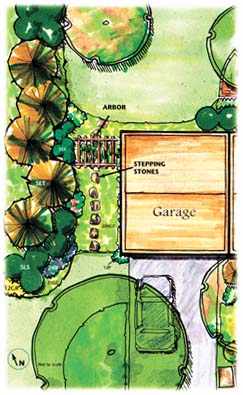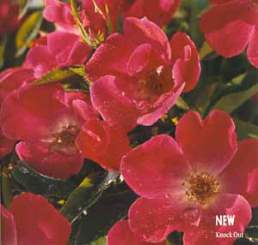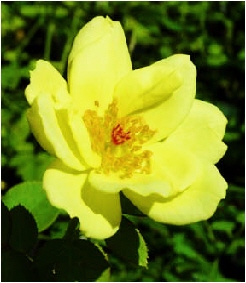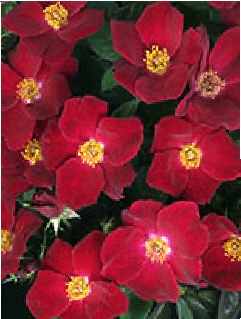|
What
are the best evergreens for a screen
or hedge?
Before
deciding on what plant material to use,
it’s best to ask a few basic questions:
- Is
the desired planting location in full
sun or shade?
- How
tall will the screen need to be to
block out a view or create the privacy
you desire?
- Will
the area have a formal or relaxed
design?
Considering
the cost of installing a screen - which
generally requires the purchase of many
plants bought all at once to create
a look of uniformity - selection of
the right plants from the very beginning
can make all the difference in how the
screen will look many years from now.
One
thing for sure: the cost of a screen
using plants or trees is usually much
less expensive than building a fence
or wall - and screens plants can be
selected that will quickly grow to their
mature height of a few feet to 30 feet
or more in height! Too, many people
build a pretty fence only to cover it
up with screen plants later.
In
the past, screens/hedges have typically
been composed of only one kind of plant,
but through years of experience we've
found that this thype of design, though
easy to implement, can create the perfect
condition for the rapid spread of disease.
A single infected plant may spell demise
for an entire row. This is what happened
in the case of the now almost extinct
'Red Tip' photinias that became so popular
during the 1980's. Too many people planted
too many hedges and screens using just
the non-native Red Tip in tightly-packed
rows, and Mother Nature came along to
maintain a balance.
It's
time for a change. An ideal screen consist's
of a variety of plant material. While
this may not be the best approach for
very formal plantings, it is quite suitable
for most other garden landscapes. Imagine
how beautiful a mixed row of conifers,
hollies, magnolias, pines and various
other evergreen
screen plants and trees would look.
Creative
Screening with Evergreen Plants &
Trees
Start
by studying your particular screening
problem.
- Is
it a large area or a very small area?
- Are
you trying to hide something unsightly,
looking for a little privacy, or wanting
to plant a hedge to separate the "rooms"
of your landscape/garden?
- Will
the plants be planted in sun or shade?
- Do
you want your screen planting to be
low maintenance and low cost?
Evergreen
plants provide continuous screening
year-round. If you use deciduous trees
and shrubs (one's that lose their leaves)
in layers, select plants with multiple
or curly stems to provide screening
as well as visual interest in the winter
months. Or use evergreen and deciduous
mixes.
 |
Make
a sketch of the area to be screened,
and make notes about your requirements
and preferences for the project.
Keep in mind that some screens may
need to serve dual purposes, such
as privacy and windbreak, shade
and screen, security and privacy,
and so forth. Use the Screen
& Hedges Listing to review
descriptions and photos as well
as the sample
screen plan to help in your
planning. A professional
landscape designer in your area
can be of great assistance, providing
you with a screen design. |
TIP:
If possible, stagger screen
plants (as shown on the left side of
the design above) and in our sample
screen plan. Staggering them will
create a better visual, noise and wind
barrier as well as a more asthetically
pleasing appearance.
There are a number of plant options
to consider that provide beautiful and
easy care screening and hedge solutions:
- Large-growing
evergreen
trees for larger area screening
(25'+ height)
- Smaller
growing evergreen
trees and large-growing shrubs
(10'-25' height) for mid-size area
screening.
-
Lower growing evergreen
shrubs for hedges (2 to 10 feet
in height)
-
Vines that can be planted on trellises,
fences, lattice or other structures.
Large
Area Screening
For
very large areas, where using fewer
trees can help cut costs, evergreen
trees are most practical. Examples
of very large-growing evergreen selections
for screening are Southern magnolias
and Deodora cedar.
Deciduous
trees
such as weeping willow, oaks, and maples
can be used as a screen screen, but
keep in mind that they will lose their
foliage for the winter months. We usually
use these large deciduous trees as a
background for lower growing evergreen
shrubs.
If
you have plenty of room to work with,
consider a tiered or layered look. Plant
larger evergreen
trees in the back, with medium flowering
shrubs and ornamental
grasses in the middle, and lower-growing
shrubs, annuals,
and perennials
along the border.
For
areas requiring tall evergreen screens
but with little planting area, look
into Italian cypress, weeping yaupon,
or Sky Pencil holly. Stay away from
those poplars and other fast growing
selections you see in mail order catalogues
that grow 10 feet in a year. Anything
that grows that fast is usually short-lived
and to weak-rooted to handle the winds
we experience in Zone 8.
Mid-size
Area Screening
Some
screening situations may require less
height, such as a divider between houses,
a screen for privacy around a pool,
screening from the street or to block
off an ugly tool shed or other smaller
structure. These situations usually
don't require plants over 15 feet in
height so mid-size
screen shrubs and trees will do.
Wax Myrtle, Hetzi Column Juniper, Camellias,
and the wonderfully fragrant Tea Olive
(to name a few) fall in the mid-size
category.
Hedges
Hedges
make very effective screens as well
as barriers and dividers that can seperate
areas of the landscape. They can seperate
a vegetable garden or fenced in dog
area from the rest of the landscape,
or enclose a patio or jacuzzi. They
can be grown at various heights, from
very low to quite high (over 10 feet).
Although used as a barrier, hedges can
also provide security if thickly grown
and prickly or thorny.
Hedges
can be grown naturally or trimmed to
formal shapes. Be aware that trimmed
hedges can require more maintenance
than other types. Too, it might take
a little longer for trimmed, formal
hedges to grow to the desired height.
For tight hedges pruning must be done
often to keep the proper shape.
Some
popular evergreen
shrubs for hedges in the mid-size
range are holly, juniper, arborvitae,
loropetalum, and ligustrums.
In
the 4-5 foot height range, there is
the disease-free Knock Out Rose which
now comes in cherry red, pink, and light
pink. There's also the new Carefree
Sunshine rose that grows very similar
to Knock Out but blooms yellow! These
roses will lose most all of their foliage
during January & February, but and
are very vigorous growers producing
an abundance of thick, attractive disease-free
foliage and colorful blooms throughout
the rest of the year. Thickly planted,
roses can also serve as a security screen
to keep the neighbors animals or children
out of your yard.
 |
|
The
Knock Out Rose is the most disesse-free,
low maintenance shrub rose we have
come across ever! Living up to its
name, masses of pretty, single cherry-red
flowers are a knock out from April
through November. We planted the
first Knock Out in our trial garden
in 2002 and since then the foliage
has shown itself to be virtually
disease free. We have yet to spray
them. A rose we would recommend
to everybody and therefore a Wilson
Bros. Favorite! |
|
|
|
|
|
|
Knock
Out Pink, Blush, and the 2006
New Introduction 'Double Knockout'
(pictured left) are three
more recent introductions
having the same disease-free
qualities as their brother,
Knock Out Cherry. |
|
| |
|
|
 |
|
Another
fabulous 2006 New Introduction from
William Radler, the famous breeder
of the award winning Knock Out®.
Radler combined the Knockout and
a Carefree rose to create this amazing
yellow beauty. Clear yellow blooms
appear in abundant clusters from
spring until fall. These non-fading
blooms survive even the hottest
of summers. This outstanding performer
is virtually maintenance free, and
another rose you won't want to be
without! |
|
|
|
 |
|
The
Home Run rose is yet another new
disease-free introduction. This
flame-red offspring of the famous
Knock Out kicks the competition
up a notch when it comes to disease
resistance. Home Run has a phenomenal
fortitude against the dreaded black
spot (like its father). But, unlike
Dad, it is also completely resistant
to powdery mildew & has a much
higher level of tolerance to downy
as well. Rounded, bushy, fast-to-flower
and nearly always in color (10 months),
it hits a grand slam in the landscape
& scores lots of points in a
pot, too! |
|
|
|
Live
Walls & Fences
Another
idea for screening is a trellis with
vines or some
nicely staked berry bushes such as raspberry
and blackberry.
If
privacy is needed for a patio, where
there is no room to plant outside the
patio area, a row of containers might
work. Large containers can have trellises
trained with vines such as clematis
for extra height. Small trees that grow
well in containers also can be used.
But remember, container plants are more
vulnerable to weather and need more
watering than other plants.
Planting
Shrubs
In Georgia, we are usually dealing with
clay, whether it be hard-packed or sandy
clay. Clay soils tend to hold alot of
moisture during wet periods. The general
rule of thumb when planting shrubs in
clay soils is to provide for good drainage.
We accomplish this by planting shrubs
in a slightly raised mound so that their
roots don't sit below the water table.
Use the diagrams and instructions found
in Planting
a Shrub and Planting
a Tree for proper planting.
In
Summary
Some
patience is required in starting screen
plantings, but the time is worth it
for the beautiful result. Plant screens
are low cost as compared to fencing
and other hardscape structures. Many
people build a pretty fence only to
cover it up later with prettier screen
shrubs and trees.
Notice:
After years of planting Leyland
cypress as in the Atlanta metro area,
it might be becoming apparent that this
is not going to be the answer to everyone’s
prayers for a perfect screening plant.
Although its fast growth and inexpensive
price made it a very popular choice
for that function, a fungal disease
known as Seiridium
Cankor is beginning
to take its toll on a few older, established
plantings.
Weed
Control Around Shrubs
Pruning
Shrubs
Fertilizing
Shrubs
Disease
Control For Shrubs |